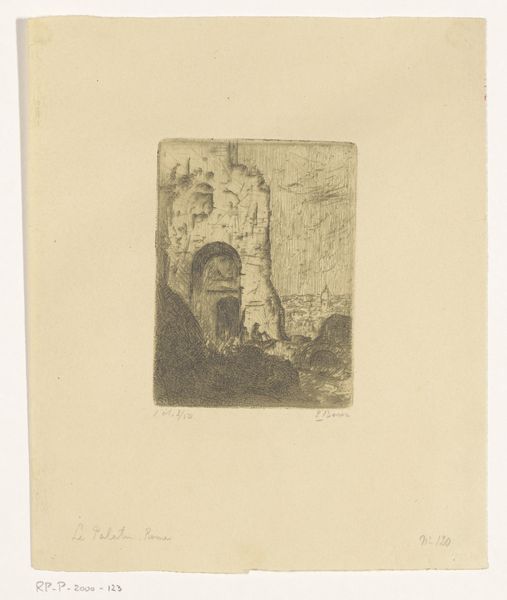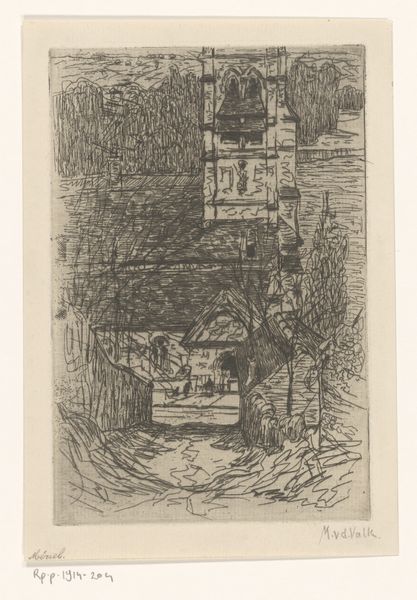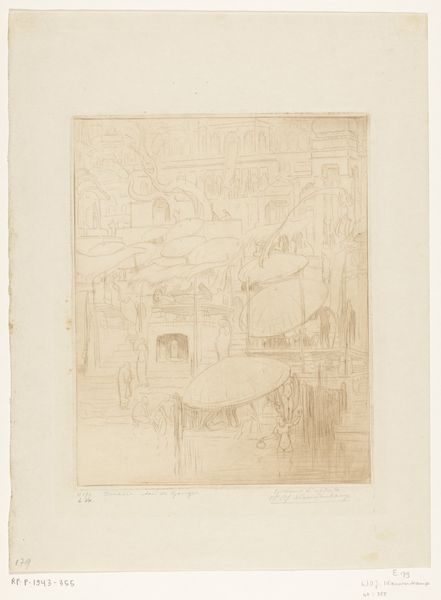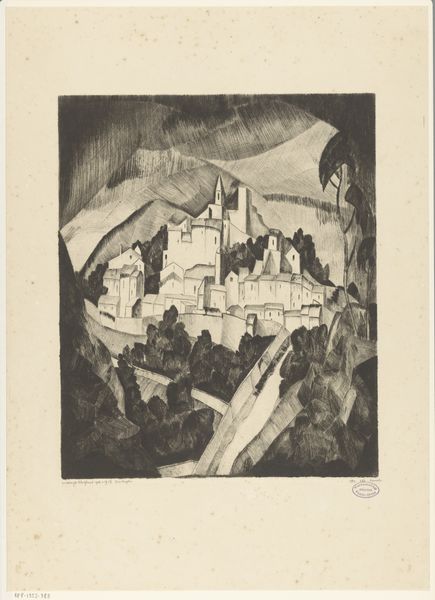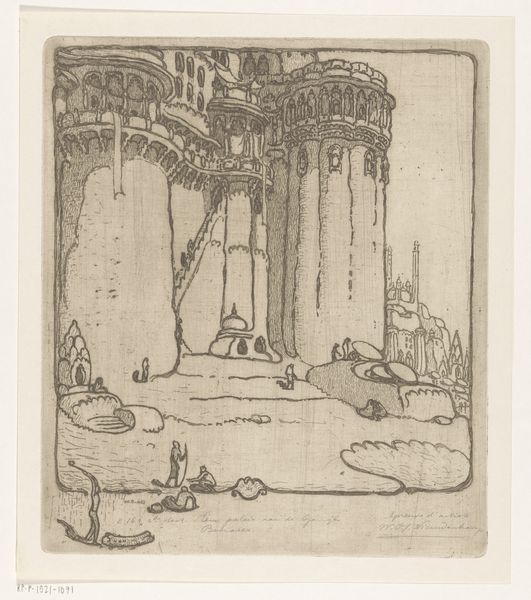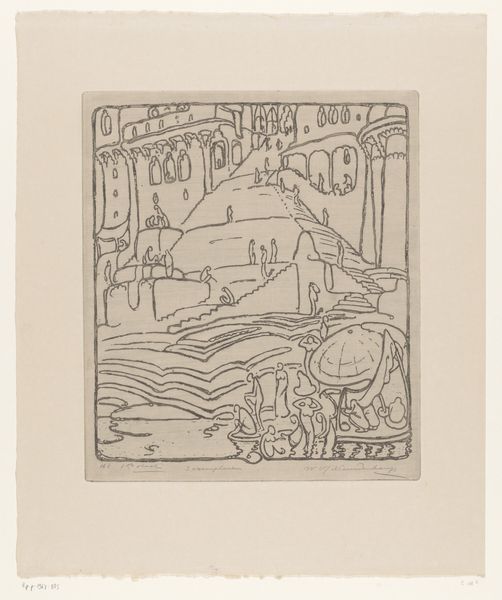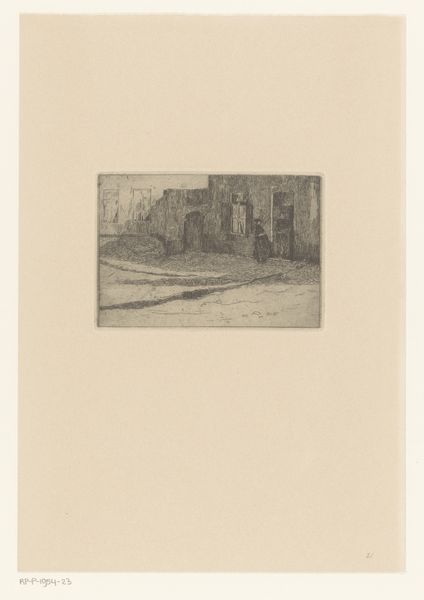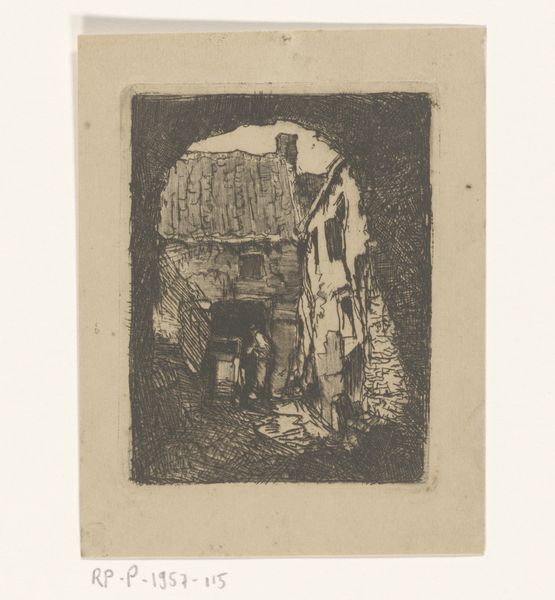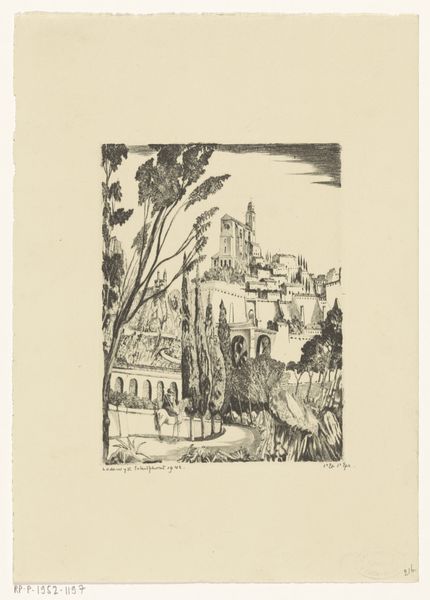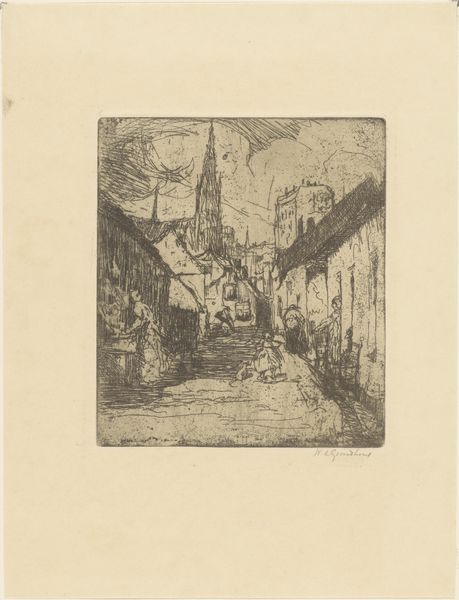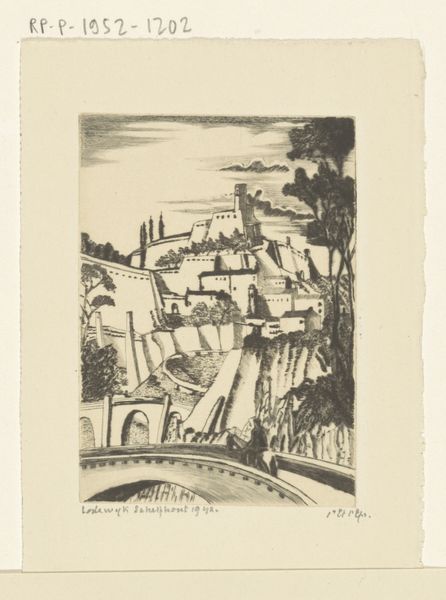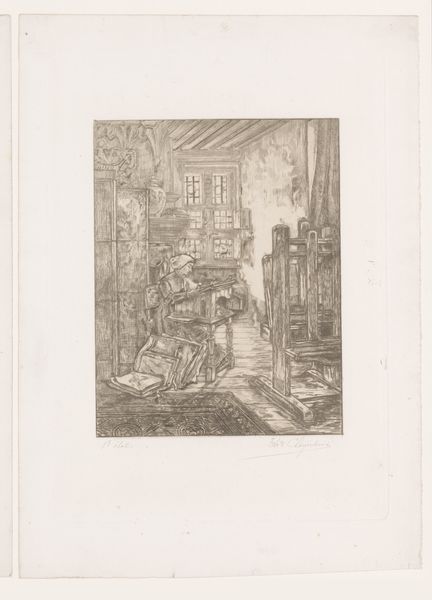
Dimensions: height 368 mm, width 318 mm
Copyright: Rijks Museum: Open Domain
Editor: Here we have "Terraces on the Ganges, Benares," a drawing or print by Wijnand Otto Jan Nieuwenkamp, likely created between 1915 and 1919. It’s a fascinating cityscape – there’s almost a dreamlike quality to the terraced architecture and the figures moving through the scene. How do you read this work, considering its context? Curator: This print resonates deeply with colonial perspectives of the early 20th century. Nieuwenkamp, as a European artist depicting Benares, or Varanasi, was inevitably framing the city through a Western gaze. Notice how the architectural details, though present, are almost flattened, idealized. Consider the figures; are they individuals or types? How does Nieuwenkamp's artistic privilege shape what is seen and, more importantly, what is unseen in this portrayal of a sacred space? Editor: That’s a powerful point. I hadn’t considered the artist’s role in shaping the narrative. The Ganges is such a central, spiritual site for Hinduism; the terrace steps—"ghats"—are used for bathing and rituals, right? Does the artwork address that directly or offer more of a detached observation? Curator: Exactly! While the scene depicts activity near the Ganges, the print steers clear of explicitly representing religious practices or beliefs. We must examine how the aesthetic choices normalize a visual consumption of a culture, potentially stripping it of its complex spirituality and lived experiences. Think about whose stories are being told and whose are being left out. This calls into question the ethics of representation itself. Editor: So, by focusing on the visual landscape, the artist inadvertently silences the voices and traditions that give Benares its true character? It gives me a lot to reflect on when appreciating art with cultural subject matter. Curator: Precisely. By analyzing these choices, we become more critically aware viewers, questioning the power dynamics inherent in artistic representation and seeking deeper understandings of the cultural contexts involved.
Comments
No comments
Be the first to comment and join the conversation on the ultimate creative platform.

